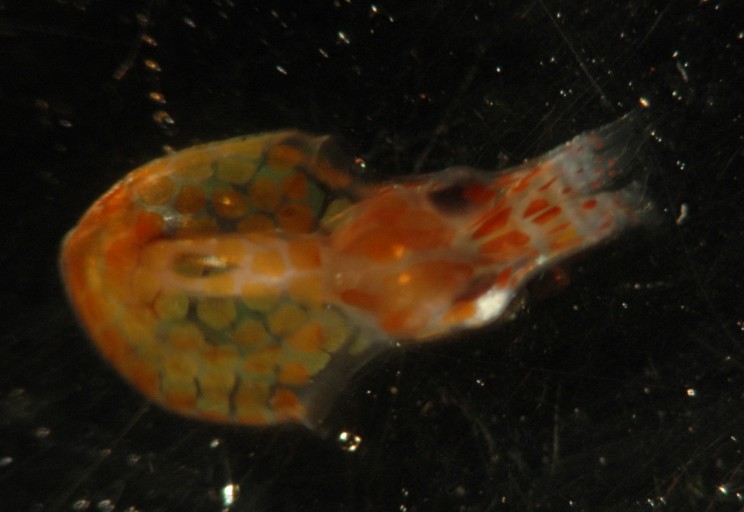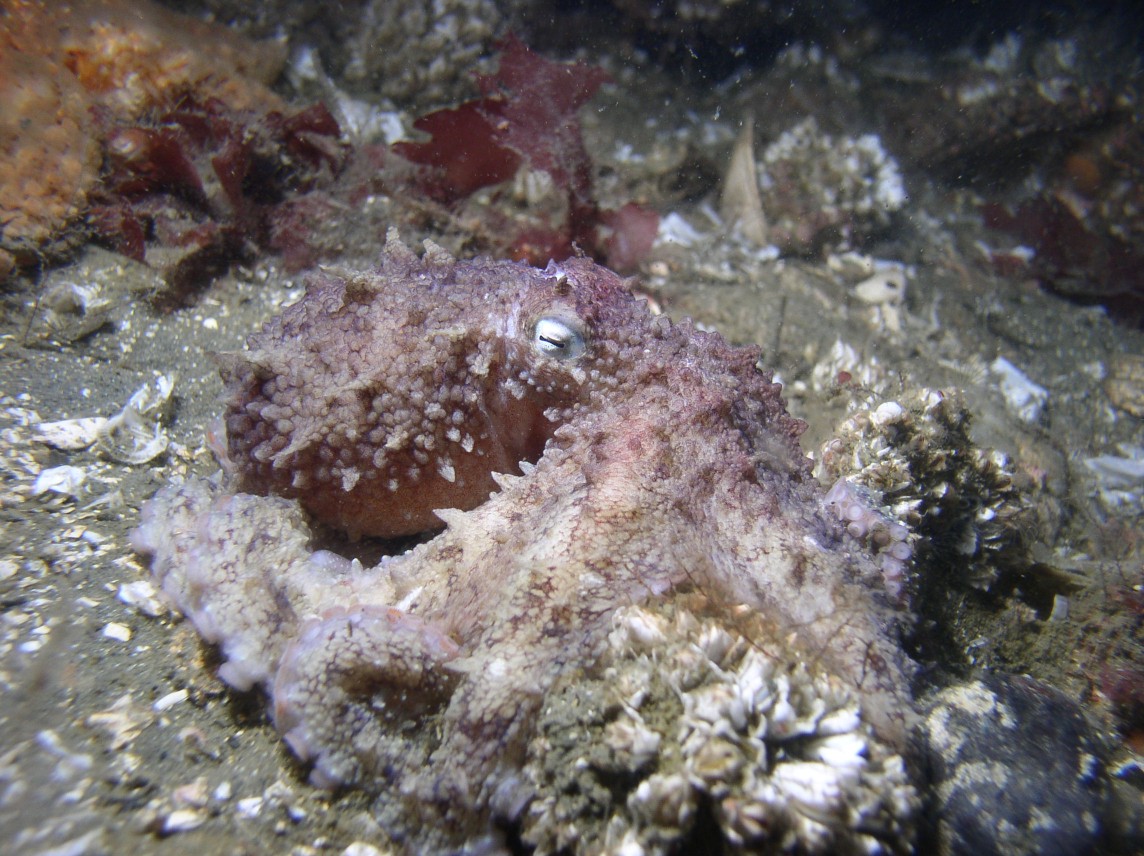Octopus rubescens Berry, 1953Common name(s): Red octopus |
|
| Synonyms: Octopus pricei | 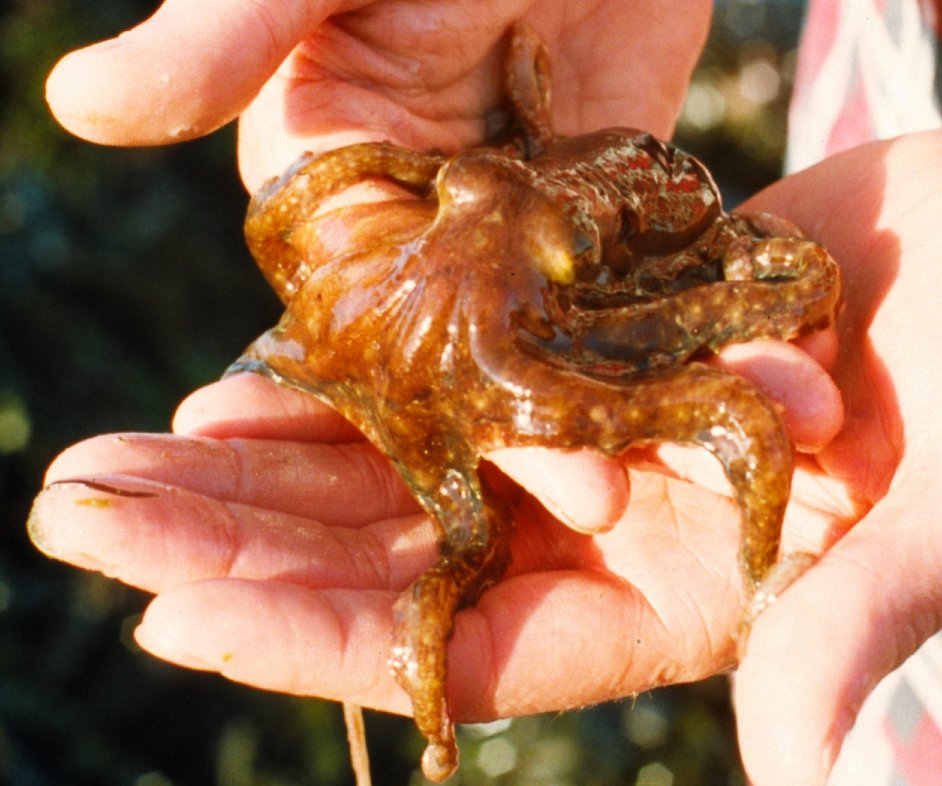 |
| Phylum
Mollusca
Class Cephalopoda Order Octopoda Family Octopodidae |
|
| Octopus rubescens from intertidal, San Simeon, Ca | |
| (Photo by: Dave Cowles May 1997). Caution: This species often bites! | |
How to Distinguish from Similar Species: Enteroctopus dofleini is larger (also red), male has a larger hectocotylus (about 1/5 the length of the arm vs 1/10 for O. rubescens (photo)), and its skin has abundant wrinkles along with the papillae. It is also said that Enteroctopus dofleini does not have the three cirri that are found below the eyes of O. rubescens (photo).
Geographical Range: Alaska to Scammon's Lagoon, Baja California and in Gulf of California. Most common intertidally in the southern part of the range. The commonest small intertidal octopus in some areas (especially northern California) but in Washington E. dofleini seems more common.
Depth Range: Intertidal to 200 m.
Habitat: Kelp beds (juveniles often washed ashore in kelp holdfasts), rocky areas, sandy mud bottoms, under stones on low intertidal.
Biology/Natural History: The sixth pair of suckers is enlarged on all but the ventral arm of males. Male hectocotylus is conspicuous, about 1/10 the length of the 3rd right arm, where it is located (photo). The ink is reddish or red-brown. The larvae have a double row of chromatophores on each arm (E. dofleini has only 1 row/arm). Adults eat crustaceans, mollusks, and fishes. They especially seem to prefer to eat small crabs and hermit crabs. Females guard egg clusters intertidally or shallow subtidally from late spring through early winter in rocky areas. Peaks in breeding are in August and September. Young hatch in 6-8 weeks, spend a brief period in the plankton, and settle as juveniles in the kelp beds. Larger individuals migrate farther offshore on sandy mud bottoms. They mate in deep water in late spring, then move inshore again. They ae often found in prawn traps.
| Return to: | |||
| Main Page | Alphabetic Index | Systematic Index | Glossary |
References:
Dichotomous Keys:Jorgensen, 2009
Kozloff 1987, 1996
Scott and Blake, 1998
Smith and Carlton, 1975
General References:
Gotshall,
1994
Harbo,
1999
Kozloff,
1993
Morris
et al., 1980
Norris, 2003
Niesen,
1994
Ricketts
et al., 1985
Scientific Articles:
Anderson, RC., P. D. Hughes, J.A. Mather, and C.W. Steele,
1999.
Determination of the diet of Octopus rubescens
through examination
of its beer bottle dens in Puget Sound. Malacologia 41:
455-460
Anderson, Roland C. and Eliza A.H. Little, 2006. Observations of a brooding Octopus rubescens (Cephalopoda: Octopodidae). The Festivus 38:1 pp 10-12 (San Diego Shell Club)
Hochberg, F.G., 1998. Class Cephalopoda: Taxonomic Atlas of the Benthic Fauna of the Santa Maria Basin and the Western Santa Barbara Channel. Volume 8 part 1: The Aplacophora, Polyplacophora, Scaphopoda, Bivalvia and Cephalopoda, pp. 1-250. P.V. Scott and J.A. Blake, Editors. Santa Barbara Museum of Natural History, Santa Barbara, CA, USA
Mather, J.A. and R.C. Anderson, 1993. Personalities of octopuses (Octopus rubescens). J. Comparative Psychology 107:3 pp 336-340Student Projects:
Thomas, Jeremy and Lyndsi Hersey, 2006. Remote chemosensory
and
feeding in Octopus rubescens near Deception Pass,
Washington.
Jeremy and Lyndsi tested whether this species would use its
chemosensory
powers to respond to the smell of prey. Using two different
red individuals,
they repeateadly placed either two clear plastic tubes or two opaque
plastic
tubes into their aquaria, then placed a crab into one of the tubes
while
out of sight of the octopus. The water inlet was flowing
through
the tubes so that the smell of the prey should enter the
water. They
observed the octopus' behavior for 20 minutes after placing the prey in
the tube. The showed little special interest in the opaque
tubes.
They occasionally contacted the tubes or even climbed on top of them
and
reached their arms partly inside, but never encountered or captured the
prey. On several occasions the octopus actually entered a
tube but
it happened to be the empty one. With the clear tube (through
which
they could see the prey) the octopus several times quickly swam to the
tube and embraced it, but could not seem to figure out that they had to
go to the end of the tube to capture the prey. More often
they would
ignore the prey, which was standing mostly immobile at the bottom of
the
tube, even though the prey was clearly visible to them. As
soon as
prey were released free into the tank, the octopus quickly captured
them.
The students concluded that this species does not seem to use smell to
find prey, but need to see the prey moving and/or actually touch the
prey
in order to be stimulated to capture it.
General Notes and Observations: Locations, abundances, unusual behaviors:
I have seen this species swimming at about 500 m depth in Monterey Bay in late spring (observations using the MBARI Ventana ROV). Presumably these individuals were adults which had swum out to deep water to breed.
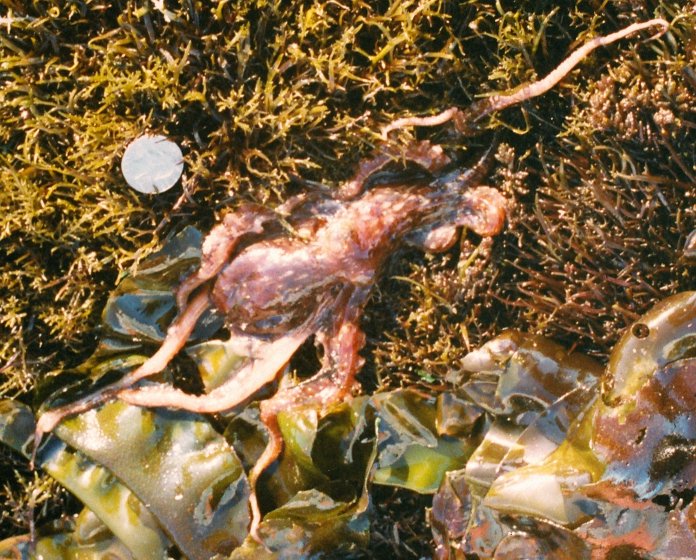
This individual is trying to sneak away through the intertidal
algae.
Dave Cowles, San Simeon, CA 1997
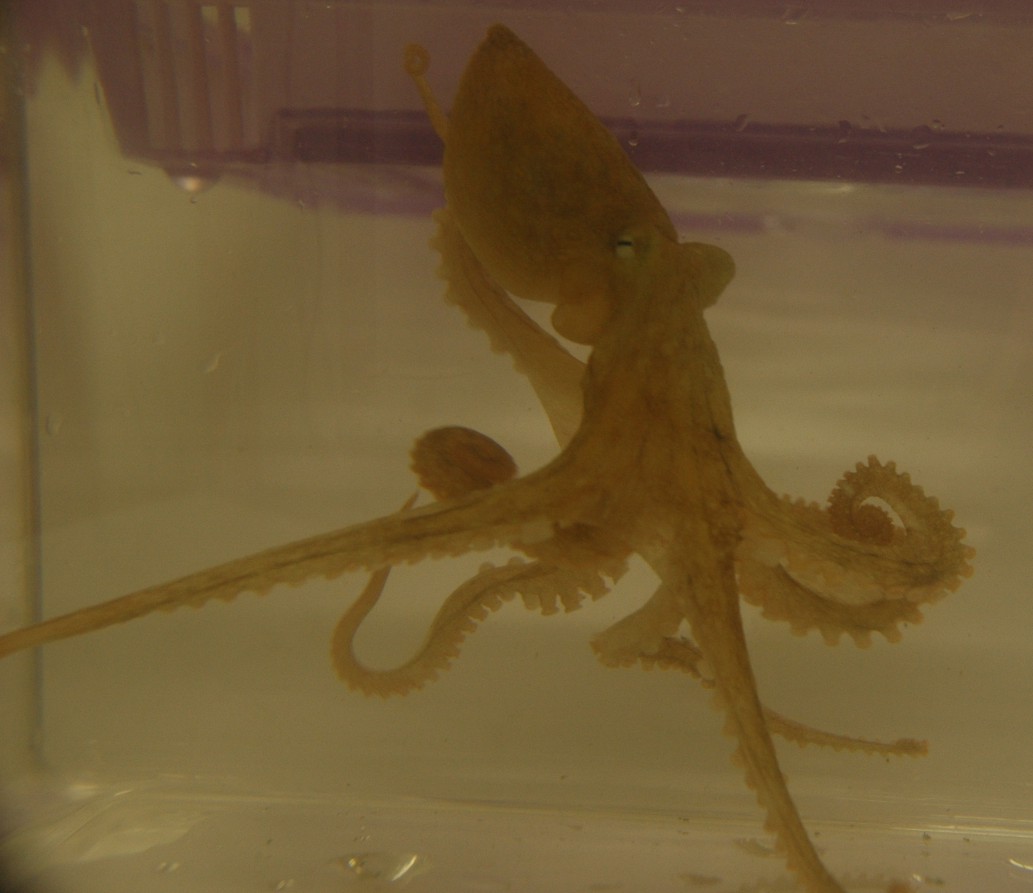
This individual has about a 20 cm arm spread. Captured near
Rosario.
This individual is a male. It usually keeps its hectocotylus
arm coiled, as can be seen on the
left in this view. The hectocotylus
arm is the third arm on the animal's right side. The first
and second
arms on the right are straight and the third arm is coiled in this
view.
Photo by Dave Cowles, June 2006
 |
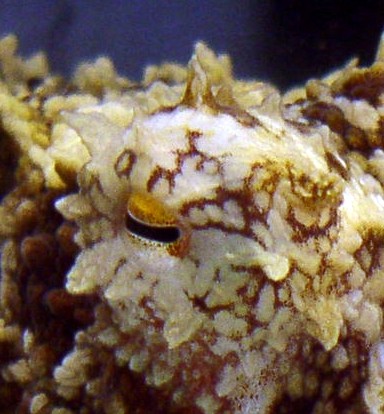 |
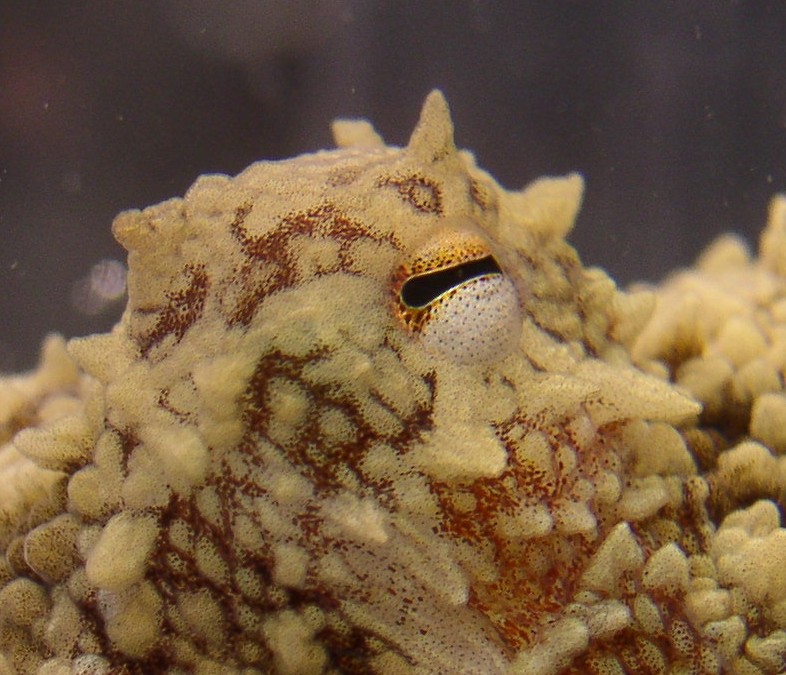 |
| Photo by Dave Cowles, July 2006 | Photo by Kirt Onthank, April 2007 | Photo by Kirt Onthank, April 2007 |
| It is said that one way to distinguish Octopus rubescens from small Enteroctopus dofleini is that O. rubescens has three distinct cirri below the eye, as seen in these views. | ||
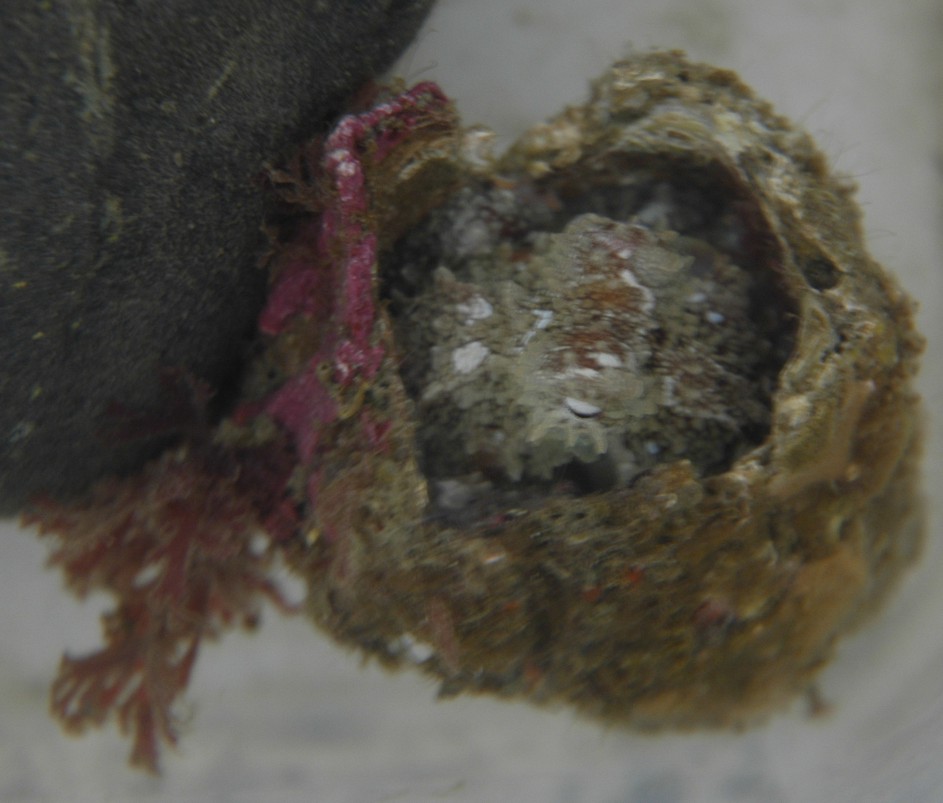
In this photo, the same individual shown in the tank above has eaten
an oregon cancer crab Cancer
oregonensis which was nestling within the plates of
a dead barnacle,
then took over the barnacle. Notice the mottled camouflage
appearance
and the three cirri clearly visible below the eye.
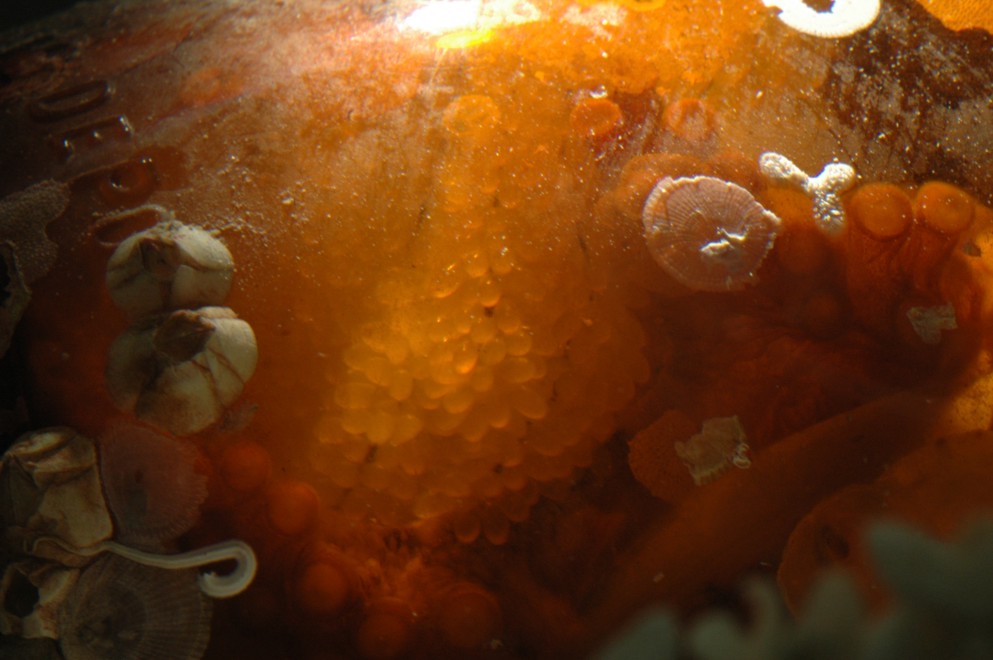
This photo shows a female Octopus rubescens (right
and bottom)
tending her eggs (center) which she has laid inside a beer bottle.
The bottle is encrusted with barnacles and tubeworms. Photo
by
Kirt Onthank, 2007.
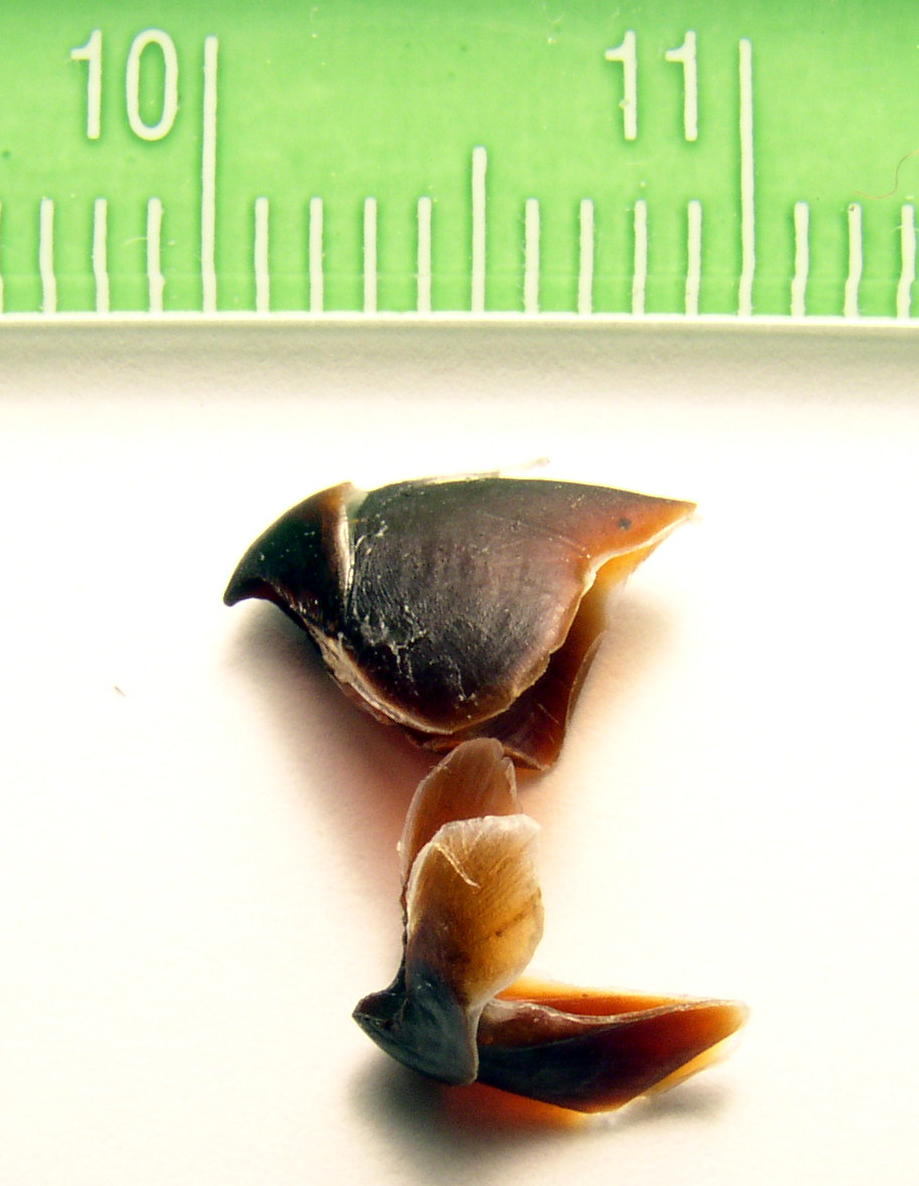
The beak of an Octopus rubescens adult is about 1
cm long.
This is the beak of the brooding female from the picture above, which
died after brooding her eggs for 3 months.
Many of the eggs had become cloudy and did not appear viable after
the 3 months.
Photo by Kirt Onthank, March 2007
 |
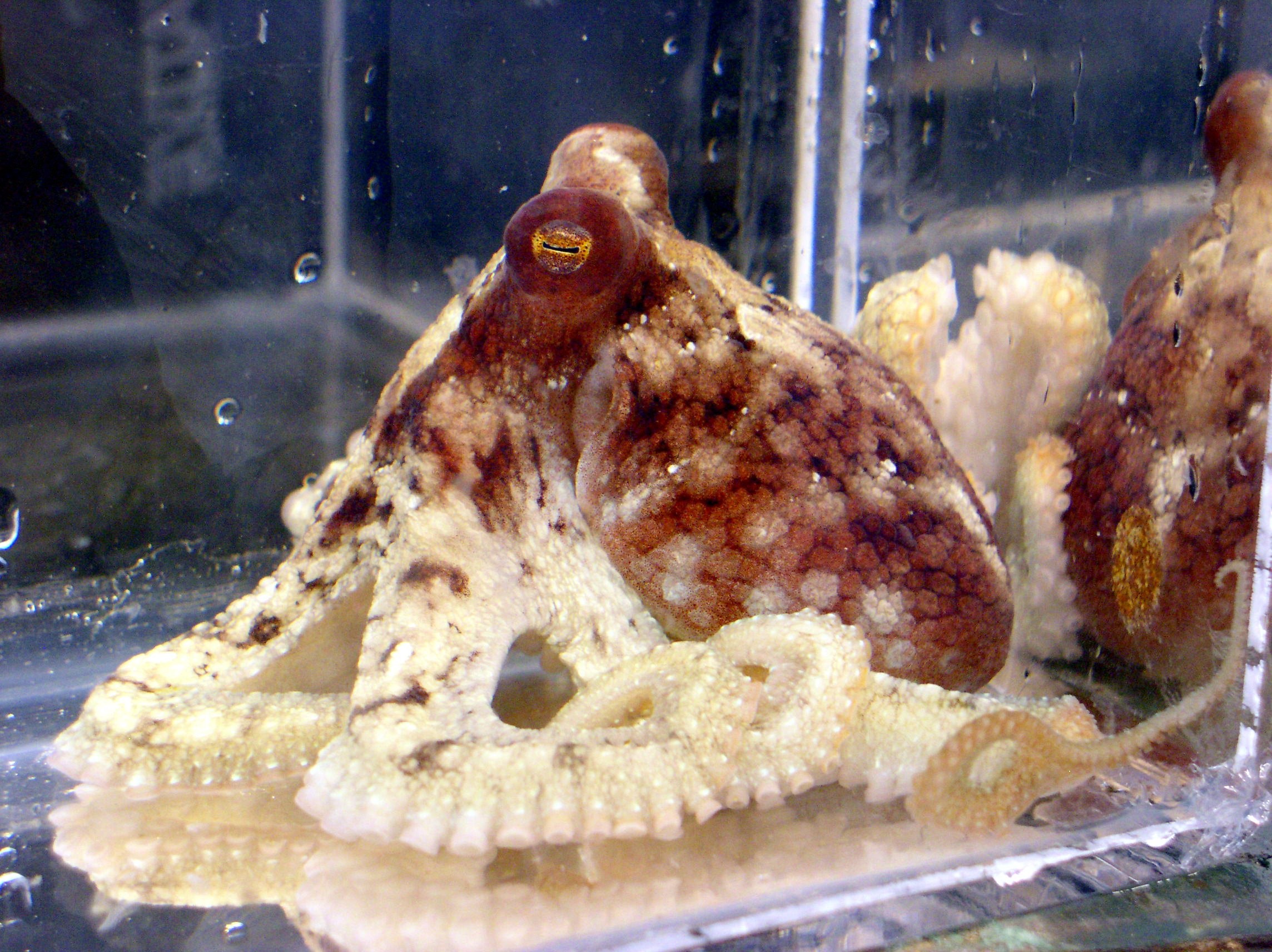 |
| Here are several more photos of an O.
rubescens which
has become accustomed to handling, showing some of the different color
patterns and textures it can take on within a few minutes.
Photos by Kirt Onthank, April 2007
|
|
Authors and Editors of Page:
Dave Cowles (2005): Created original page

